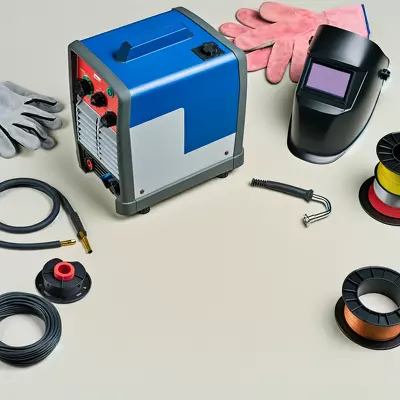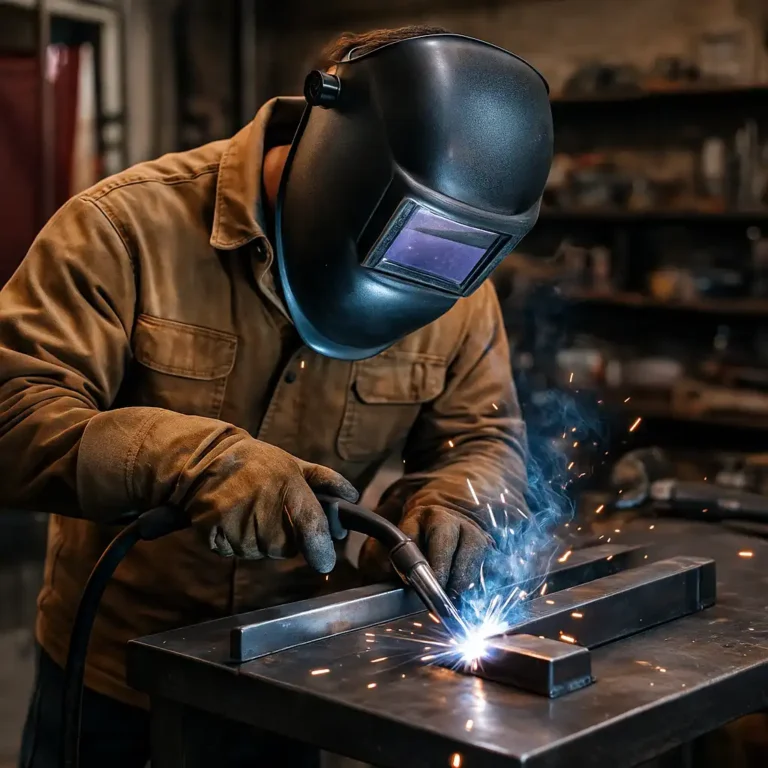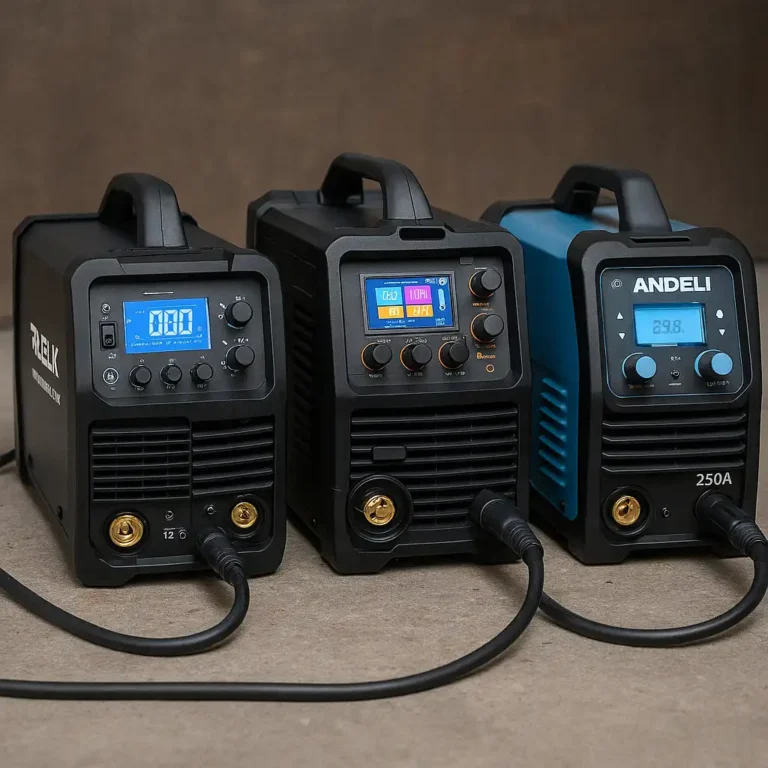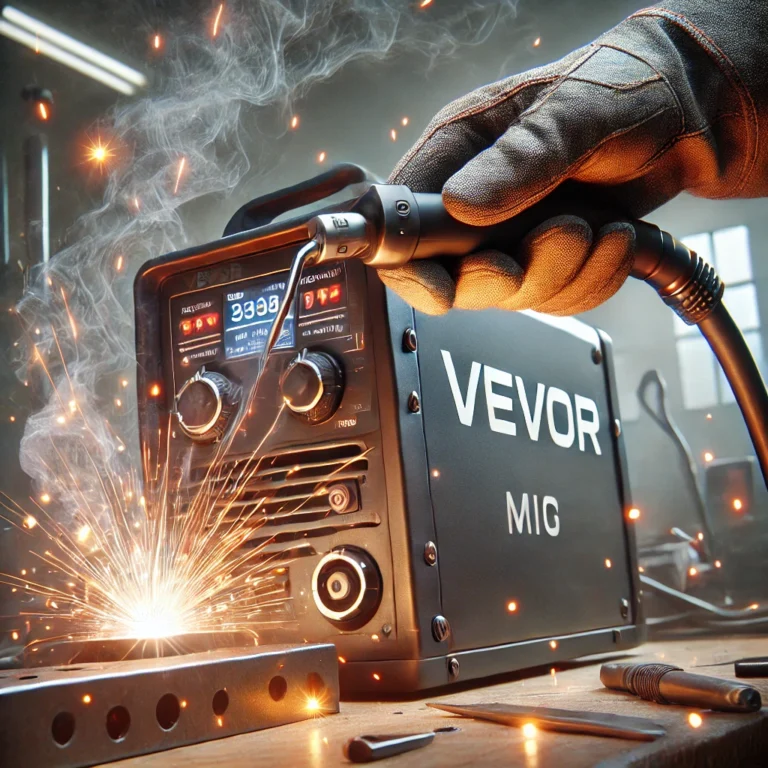Best MIG Welder for Beginners – Easy-to-Learn Picks That Deliver Clean Results

Disclosure: This post contains affiliate links. As an Amazon Associate, I earn from qualifying purchases—at no extra cost to you.
Last Updated: November 2025
Finding the best MIG welder for beginners can feel like a guessing game when you’re still learning the basics. A beginner-friendly machine should start cleanly, feed wire smoothly, and stay steady at low amperage so you can focus on torch angle and travel speed. When a welder behaves predictably, the whole learning process becomes a lot less frustrating.
👉 Before comparing these MIG options, you may want to check our guide on beginner-focused welding machines for different setups, which explains how MIG fits next to Stick, TIG, and multi-process units.
View on Amazon – FORNEY Easy Weld 140 Amp 120-Volt Welder (No Gas Needed)
View on Amazon – Hobart 500554 Handler 190 MIG Welder 230V
View on Amazon – ESAB Rogue EM 140 Flux-Core/MIG Welder, 120V, 140 Amp Output
📋 Quick-View Comparison List
- Simple controls that help beginners dial in settings faster
- Wire-feed setups built to reduce bird-nesting
- Portable sizes that fit garages, sheds, and small workshops
- Output ranges suited for car repairs and light fabrication
- Duty cycles tuned for practice sessions and short weld passes
- Works with gasless wire or full MIG depending on your setup
🔍 Key Factors Welders Should Consider
As a new welder, you want a machine that keeps the arc stable even when your technique isn’t perfect yet. Consistent wire feed and clear voltage steps make it easier to drop clean beads without chasing your settings. You also want enough power to handle basic repairs but not so much heat that thin steel becomes challenging.
Portability matters too. Most beginners work in tight spaces, so a lightweight, easy-to-handle machine helps you stay focused on learning.
👉 Before choosing a machine, take a look at our breakdown of beginner-friendly MIG welding basics to get a clearer feel for how the arc behaves.
🔍 Balancing Portability and Performance
A 120V MIG welder is usually the most comfortable starting point. It plugs into any standard outlet and gives smooth control over thin steel, which is exactly what beginners need for early practice. If you know you’ll eventually weld thicker material, stepping up to a 230V model gives you more penetration and room to grow.
For day-to-day learning, though, simple controls and predictable output are worth more than maximum amperage.
🔍 Power Requirements & Real-World Mobility
Most beginner MIG welders are built for 120V use, making them ideal for home garages or driveway repairs. They still pack enough power for brackets, automotive work, and basic fabrication. Stepping up to 230V is great once you need deeper penetration or plan to take on more serious projects.
Mobility also matters. A balanced frame, easy wire access, and clear panel layout all help you get set up quicker and spend more time running actual beads.
🔍 Which Portable Welder Fits Different Types of Welders
If you’re brand new to MIG, a 120V model or flux-core setup keeps everything simple while you learn heat control and technique. DIY welders who handle small repairs, mower decks, auto panels, or home projects will appreciate a compact machine that’s easy to move around.
If you expect to grow into thicker fabrication or want a welder that stays with you longer, a stronger machine with better duty cycle is a smart step.
📦 FORNEY Easy Weld 140 – Best for Simple, No-Gas Beginner MIG Work
The FORNEY Easy Weld 140 keeps welding straightforward, which is perfect when you’re learning your first beads. It runs on any household outlet and uses flux-core wire, removing the need for gas bottles or extra setup. The arc stays forgiving and helps beginners build confidence quickly.
It does max out on thicker steel, but for early practice and everyday repairs, it’s a dependable place to start.
📦 Hobart Handler 190 – Best for Beginners Who Want Room to Grow
The Handler 190 gives beginners a cleaner, more controlled arc across a wider range of thicknesses. It’s friendly at low amperage yet powerful enough to take on bigger projects as your skills advance.
You will need a 230V outlet, but once you have the right power, the machine feels solid and capable, especially for welders who expect to improve quickly.
📦 ESAB Rogue EM 140 – Best for Smooth Low-Amp Control
The Rogue EM 140 shines when you’re working at the lower end of the amperage scale. Its wire feed and arc stability help beginners concentrate on movement and bead shape instead of fighting an inconsistent weld.
Its compact size makes it easy to work in tighter spaces. While it isn’t meant for heavy steel, it handles the kinds of jobs most new welders start with.
📌 Key Takeaways
- Smooth wire feed and clear controls make learning MIG far easier
- 120V machines work best for beginners practicing at home
- 230V welders offer more power once you’re ready to tackle thicker steel
- Lightweight designs and simple panels help you stay focused on technique
- Match your welder to the projects you expect to handle
🟢 FAQs
Q: Is MIG the easiest welding process for beginners?
Yes. MIG has a short learning curve and helps new welders produce clean beads quickly.
Q: Can these welders handle auto panels?
They can. With clean prep, 120V MIG and flux-core machines work well on thin-gauge steel.
Q: Should beginners start with flux-core or gas MIG?
Flux-core is simpler, especially outdoors. Gas MIG gives cleaner welds once you’re comfortable.
Q: Are these welders strong enough for light fabrication?
Yes. They handle common home and shop projects well, but heavy structural steel requires more power.
✅ Conclusion
Choosing the best mig welder for beginners depends on where you weld and how quickly you plan to move into larger projects. The FORNEY Easy Weld 140 is the easiest starting point, the Hobart Handler 190 gives you plenty of power to grow, and the ESAB Rogue EM 140 delivers a smooth arc that helps you develop solid technique. Any of them can set you up for a confident start in MIG welding.






